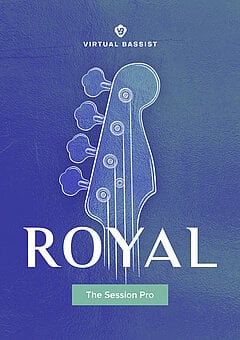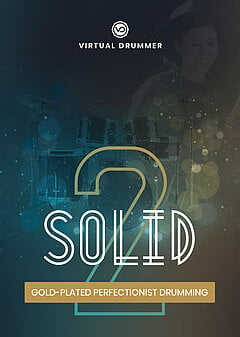How to Write Piano Ballads
Create emotional, lyrical and professional piano parts from the comfort of your home studio, even if you aren’t a pianist yourself
JUNE 5TH, 2022
Since our new release of Virtual Pianist VOUGE we want to show you how to use the plug-in and it's versatility. Read until the end of this article for a brief tutorial of how to write piano ballads :
Song structure
Before we dive deep into the artistry of the piano part itself, it’s essential to have an overview of how the ballad should sound as a whole. Assuming you’re incorporating vocals (as is most common for ballads, of course), the principle to always keep first and foremost in your mind is that everything exists to support the vocals: the piano, any additional chordal instruments such as strings, synths, drums, and especially the mixing and mastering. This means that typically you’ll only want a short piano intro to set the mood and then launch right into the vocals.
You don’t have to go crazy with the song structure — it can be as simple as: Intro - Verse A - Chorus A - Interlude - Verse B - Chorus B - optional Chorus C - Outro. You don’t have to use this structure by any means, just know it’s tried and true when you’re feeling stuck. In a piano ballad, you might naturally expect the piano to be the main accompaniment, but this isn’t necessarily true.
The intro, interlude, verses and possibly the outro should all be piano-focused, but with the choruses this isn’t essential. In fact, the piano may disappear entirely to make way for an orchestra or rich synth chords; often the chorus calls for something bigger than the piano can provide, and this temporary reprieve allows the piano to feel fresh when it finally comes back in.
The art of dreamy arrangements
There are two primary pieces you must nail in order to create smooth, emotional chords for pop ballads: 1) the timbre of the piano and 2) chord voicings. Timbre is generally very simple: if you’re using Virtual Pianist VOGUE, simply choose the Emotion or Ballad setting along the left hand side. This gives you a dark but firm sound, just like a closed-lid grand piano. If you want to go even darker and more subdued, simply play with the Dark / Light fader in the center of the UI.
Chord voicings are a little tougher to pick up quickly (many pianists study them for years before they have a solid handle on them!), but there’s one general principle that will generally yield great results: the idea of open voicings — put simply, this implies that you avoid playing chords in “root position” with the notes stacked closely on top of each other.
Instead, take the third of the chord (Eb in a C minor chord, A in an F major chord, etc.) and transpose it up an octave, giving you root + 5th + 10th instead of root + 3rd + 5th. Play these in succession and you’ll immediately hear how much extra space is present in the open chord. Space is an idea that will repeatedly come into play in piano ballads, as tighter or “closed” voicings aren’t broad enough to support the singer.
While it’s beyond the scope of this article to address writing for singers, there are a few production tips that will help the vocals sit properly in the mix. With piano ballads, the goal is often to create a feeling of intimacy, so it can help to bring up their breath noises. Compressors can do this, but volume automation or a specialized plugin may be a better choice so you can avoid smashing the dynamics of the performance. Pay particular attention to the reverb as well — if the vocals are too dry, something may feel missing. The right amount of reverb goes a long way!
Building the piano part
Unless you have experience performing as an accompanist for a singer, this is where things will likely start to break down. You have a chord progression and you’ve chosen the right voicings, but it’s just a collection of static chords that will eventually become boring for listeners. The piano in Hello by Adele only plays each chord once, but it avoids becoming stagnant via quick chord changes and a solid progression. Other than great writing, the best way to master piano writing is of course to be a pianist — but there are several things you can do to create a passable piano part that does the job, even if you don’t have the chops yet.
The first and perhaps most obvious is arpeggios: splitting up the notes of the chord over time and changing their octave at will. This is simple, but with piano ballads simple is preferred! The part that must shine is always the vocals, and the more active the piano part is, the more it distracts from the singer. If you’re puzzled about which notes to play and when, Virtual Pianist VOGUE will take care of it for you! Select a Style and Phrase Intensity (the bottom octave of the UI piano keys), and VOGUE will arpeggiate every chord you play. Different Styles provide different patterns, though as long as you have an interesting chord progression, it’s likely you won’t need to change this frequently during a single song.
You’ll also need to factor in the dynamic structure of the song. The chorus will generally be louder and contain more energy, and the piano part needs to reflect that. There are plenty of ways to accomplish this, including higher note velocities, making the arpeggios more complex and involved, and adding rhythms and faster notes into the arpeggios. VOGUE does this all with a couple of faders and an octave of keyswitches, so you don’t have to add in any of this manually unless you choose to!
Wrapping up
Writing piano ballads isn’t very complicated from a technical perspective, but this simplicity comes with a tradeoff: every detail is more present in the final mix, meaning everything has to be dialed in production- and mix-wise. The piano must complement the vocals at all times and take a background role, not a leading one.
While you don’t need to have piano throughout the entire song, and it’s likely better for you not to ... the choice of instrumentation must still be deliberate and soft, even during the most “climactic” moments. Unless you have a very specific reason for doing so, go with predominantly open piano chords to broaden the sound and prevent the harmony from becoming cluttered. Take advantage of every possible means of adding breathing room to your piano ballads, between chord voicings, composition, mixing, etc. — that’s how you build the feel of the ballad from the ground up.
As always, if you want to make the process even simpler and reduce your piano work down to basic chords, Virtual Pianist VOGUE can do the heavy lifting for you every time!
About the Author
Harry Lodes is a copywriter, marketing consultant and content writer for audio and ecommerce brands. He lives in the Philadelphia area, releasing Eastern/Western hybrid EDM under the artist name KAIRI hearkening back to his roots in Berklee College of Music.
Stay up to date
Sign up and we’ll send you an e-mail with product news and helpful stuff every now and then. You may unsubscribe at any time.
Defy Limits
We develop software solutions that enable people to create, consume and interact with music.




